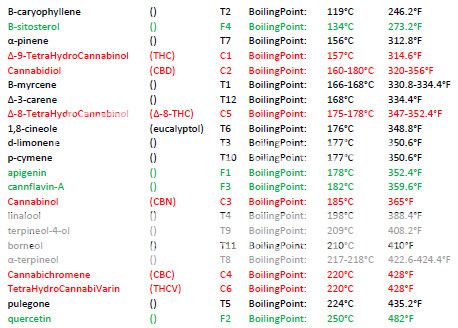OO
Technical Skeptical
I disagree. I very truthfully believe there can be guidelines on how to enjoy the effects without intoxication, as I sure know there have been times where I have felt the effects in this manner.There is no way to create concise guidelines for avoiding intoxication via inhalation techniques. Other than, to avoid possible intoxication, don't inhale.
The problem is determining the variables responsible for such.
I corrected you because I don't want to see you confusing others. I also want you to decide whether or not what you alluded to was correct, even without the correct mechanism. I don't know if it is true what you have alluded to, that more CBN is administered via combustion rather than vaping, but I suspect that it is not the case, and know that there are far more factors that must be considered before making such a blanket statement.OO, sometimes it seems you correct people just for the sake of correcting them.
It's true it's not the only variable when discussing the differences, but i was speaking of what we know, i'd love to speculate on the potential variables in play here but i was being pratical.
The main difference between vaporization and combustion IS the ocurrence of pyrolysis which in turn allows for more oxidation of THC into CBN because of the higher heat.
How this difference afects air ratios, the effect of cancerogenic compounds and lack of oxigen in the brain, etc etc.. is still up for discussion, but i doubt it is that significant compared to the effects of pyrolysis in the cannabinoid profile alone.
I believe that in all practicality, specifics must be considered, or at least that is the conclusion I have arrived at after much testing. That means that the specifics matter, especially in practice.
Do you have any sources to verify your claim that CBN is created in much larger quantities with combustion, rather than vaporization? Please don't make claims without proof, we don't want to mislead anyone (you know, the rules?).

 I had a co-worker one time who would do that. For ten years I would start each conversation we had with, "Now, correct me if I'm wrong..........."
I had a co-worker one time who would do that. For ten years I would start each conversation we had with, "Now, correct me if I'm wrong..........." 







 from combusting but not the smell and negative side effects.
from combusting but not the smell and negative side effects.